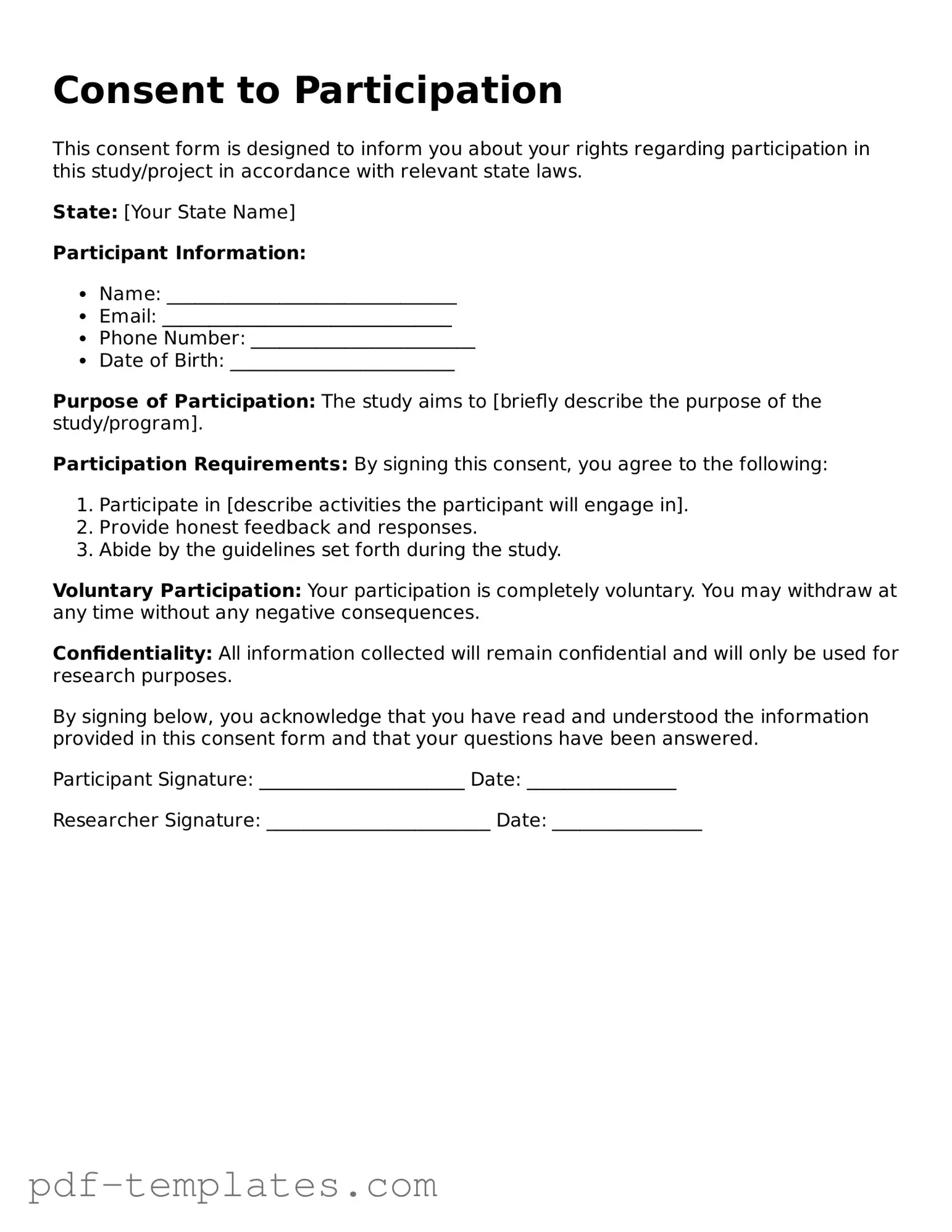The Consent Form is similar to a Release of Liability document. Both serve to protect one party from legal claims by obtaining the other party's agreement to assume certain risks. In a Release of Liability, individuals acknowledge the potential dangers associated with an activity and agree not to hold the organizer responsible for any injuries that may occur. This mutual understanding can help prevent disputes and clarify the responsibilities of each party involved.
Another document akin to the Consent Form is the Waiver. A Waiver is a legal tool that allows individuals to relinquish their right to pursue legal action against another party. Like the Consent Form, it requires clear communication of risks and the acceptance of those risks by the individual signing it. Both documents aim to ensure that individuals are aware of the potential consequences of their actions and agree to proceed with full knowledge.
The Medical Release Form also shares similarities with the Consent Form. This document permits healthcare providers to share a patient's medical information with designated individuals or organizations. Just as a Consent Form requires informed consent for participation in activities, a Medical Release Form ensures that individuals understand what information is being shared and the implications of that sharing. Both documents emphasize the importance of informed decision-making in sensitive situations.
A Non-Disclosure Agreement (NDA) is another document that resembles the Consent Form in terms of protecting sensitive information. While a Consent Form focuses on risk acceptance, an NDA emphasizes confidentiality. Both documents require the parties involved to acknowledge and agree to specific terms, ensuring that sensitive information remains protected and that all parties understand their obligations.
Understanding the essential documents involved in transactions, such as a Consent form, can help facilitate smoother processes. For instance, the documentonline.org/blank-texas-rv-bill-of-sale/ serves as a crucial part of transferring ownership for recreational vehicles in Texas, ensuring both parties are informed about their rights and responsibilities while minimizing potential disputes.
The Authorization Form is also comparable to the Consent Form. This document grants permission for specific actions, such as the use of a person's likeness in promotional materials or participation in a study. Both forms require clear communication of what is being authorized and the implications of that authorization. By signing either document, individuals affirm their understanding and agreement to the terms presented.
Finally, the Participation Agreement bears resemblance to the Consent Form. This document outlines the terms and conditions under which an individual agrees to participate in an event or program. Like the Consent Form, it typically includes a section on risks and responsibilities, ensuring that participants are aware of what they are agreeing to. Both documents aim to create a transparent understanding between the parties involved, fostering a sense of trust and accountability.
